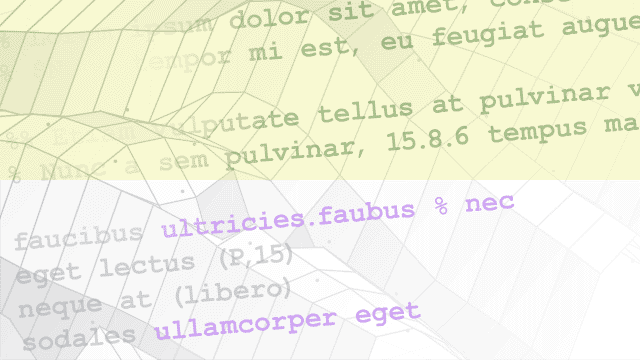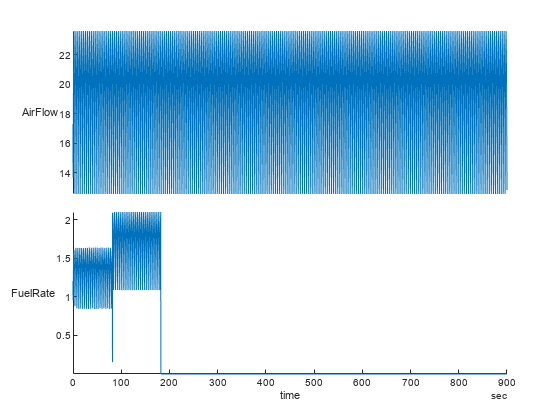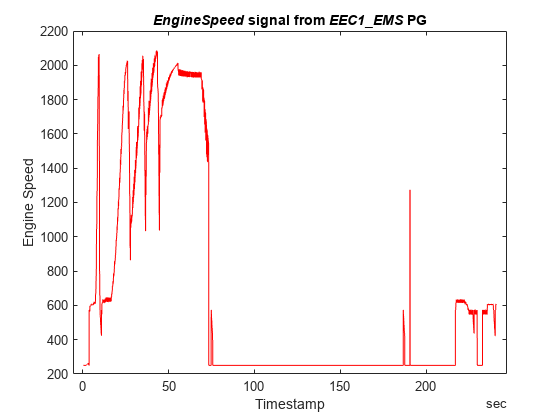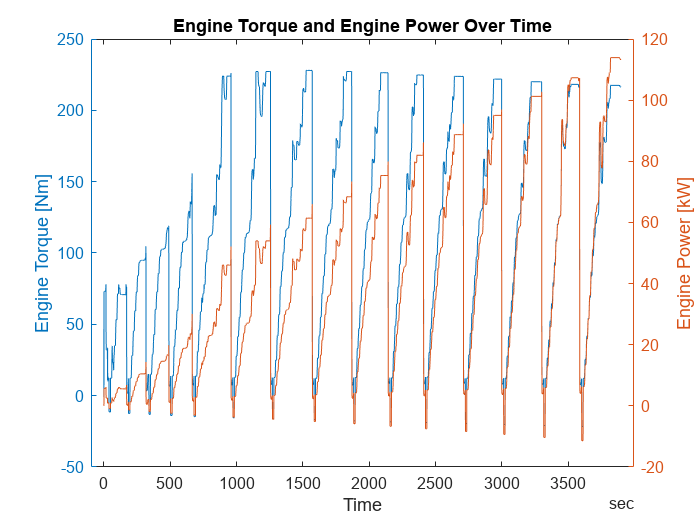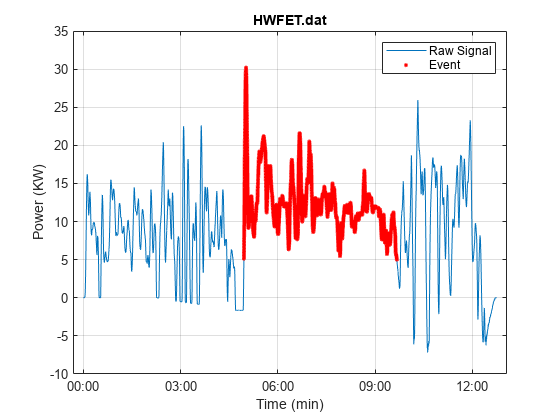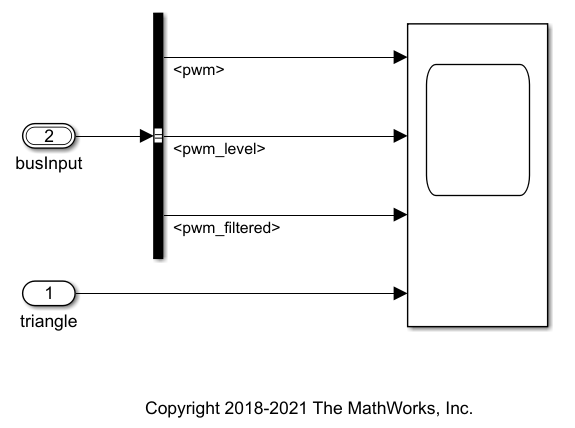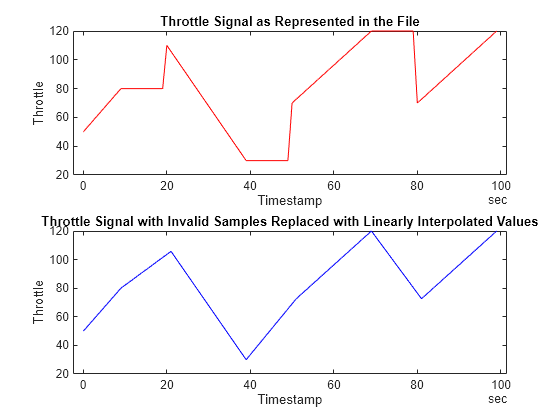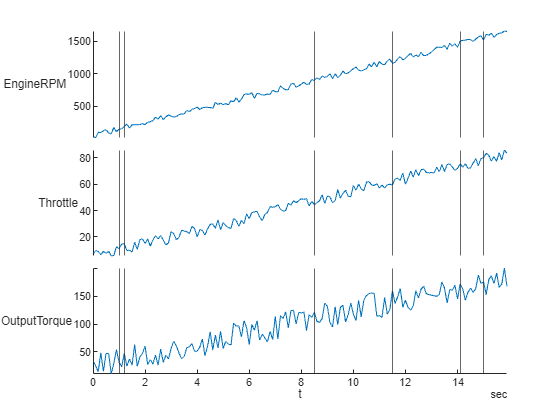MDF 文件
工具箱提供对 MDF 文件的读写访问权限。您可以对 MDF 文件进行排序和最终化,以及添加、保存或删除附件。
使用 mdfDatastore 访问由大型或多个 MDF 文件组成的数据存储。
函数
读取
mdfInfo | 访问或创建 MDF 文件元数据 |
mdfChannelGroupInfo | 从 MDF 文件获取通道组元数据 (自 R2023a 起) |
mdfChannelInfo | 从 MDF 文件获取通道元数据 (自 R2023a 起) |
mdfRead | 从 MDF 文件中读取通道数据 (自 R2023a 起) |
mdfVisualize | 从 MDF 文件查看通道数据 |
LIN 数据
linDatabase | 基于 LDF 文件创建 LIN 数据库 (自 R2025a 起) |
linMessageTimetable | 将 LIN 报文转换为时间表 (自 R2025a 起) |
写入
mdfCreate | 用元数据创建 MDF 文件 (自 R2022a 起) |
mdfWrite | 将时间表数据写入 MDF 文件 (自 R2022a 起) |
mdfAddChannelGroupMetadata | 将通道组和通道元数据添加到时间表 (自 R2022a 起) |
文件操作
mdfSort | 根据 ASAM 标准对 MDF 文件进行排序 |
mdfFinalize | 根据 ASAM 标准最终化 MDF 文件 (自 R2021b 起) |
mdfSaveAttachment | 从 MDF 文件保存嵌入的附件文件 (自 R2023a 起) |
mdfAddAttachment | 将文件附加到 MDF 文件 (自 R2022a 起) |
mdfRemoveAttachment | 从 MDF 文件删除附件 (自 R2022a 起) |
mdfDatastore | MDF 文件集合的数据存储 |
read | 读取 MDF 数据存储中的数据 |
readall | 读取 MDF 数据存储中的所有数据 |
preview | 来自 MDF 数据存储的数据子集 |
reset | 将 MDF 数据存储重置为初始状态 |
hasdata | 确定 MDF 数据存储中是否有数据可以读取 |
partition | 对 MDF 数据存储分区 |
numpartitions | MDF 数据存储的分区数 |
主题
- 转换您的 mdf 对象代码
更新您的代码以直接访问 MDF 文件,而不是使用
mdf对象。 - MDF 应用故障排除
对 MDF 文件应用的常见问题进行故障排除。
精选示例
使用未最终化和未排序的 MDF 文件
此示例说明如何使用未最终化和未排序的 MDF 文件。此示例中使用的未最终化的 MDF 文件 MDFUnfinalized.MF4 是由 CSS Electronics 提供的 CANedge2 CAN 总线数据记录器记录的。
从 MDF 文件中解码 J1939 数据
此示例说明如何在 MATLAB® 中从 MDF 文件中导入和解码 J1939 数据进行分析。此示例中使用的 MDF 文件是使用 Vector 的 CANoe 基于 System Configuration (J1939) 采样生成的。此示例还使用 Vector 采样配置提供的 CAN 数据库文件 Powertrain_J1939_MDF.dbc。
MDF 数据存储快速入门
以下示例说明如何使用 Vehicle Network Toolbox™ 的 MDF 数据存储功能快速高效地处理分布在多个 MDF 文件中的一个数据集。当数据太多而无法放入内存时,此工作流也适用。
对多个 MDF 文件进行数据分析
以下示例说明如何研究多个驾驶周期间放电模式下的车辆电池电量。用于此分析的数据包含在一组 MDF 格式的车辆日志文件中。对于此示例,我们需要建立一种机制,用于“检测”车辆电池何时处于给定模式。我们真正要做的是建立一个探测器,以确定何时关注的信号(在本例中为电池电量)满足特定条件。当条件得到满足时,我们称之为一个“事件”。每个事件都需要满足一定的时间限制才算是“合格”事件。也就是说,事件至少要持续 5 秒,才算是一个“合格的”事件。这种鉴定步骤有助于限制噪声和消除瞬变。此示例中显示的阈值仅用于举例说明。
将通道从 MDF 文件映射到 Simulink 模型输入端口
此示例说明如何以编程方式从 MDF 文件中映射通道,并通过 Simulink® 模型的输入端口使用其数据。它收集 Simulink 模型的输入端口名称,并将它们与给定 MDF 文件的内容相关联。然后在它们之间创建链接,当模型运行时,该链接会使用来自 MDF 文件的通道数据。
MATLAB Command
You clicked a link that corresponds to this MATLAB command:
Run the command by entering it in the MATLAB Command Window. Web browsers do not support MATLAB commands.
选择网站
选择网站以获取翻译的可用内容,以及查看当地活动和优惠。根据您的位置,我们建议您选择:。
您也可以从以下列表中选择网站:
如何获得最佳网站性能
选择中国网站(中文或英文)以获得最佳网站性能。其他 MathWorks 国家/地区网站并未针对您所在位置的访问进行优化。
美洲
- América Latina (Español)
- Canada (English)
- United States (English)
欧洲
- Belgium (English)
- Denmark (English)
- Deutschland (Deutsch)
- España (Español)
- Finland (English)
- France (Français)
- Ireland (English)
- Italia (Italiano)
- Luxembourg (English)
- Netherlands (English)
- Norway (English)
- Österreich (Deutsch)
- Portugal (English)
- Sweden (English)
- Switzerland
- United Kingdom (English)
